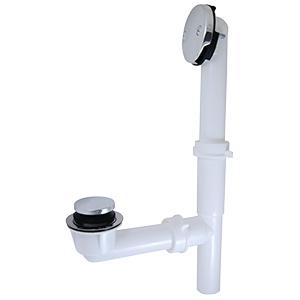


In order to produce a high-quality recylate, the feed ideally should not be mixed with other kinds of plastic and should have a uniform material composition. When different kinds of PVC waste are fed to a mechanical recycler, the resulting product’s composition is difficult to predict, which is problematic because most PVC products, even recycled ones, require a specific PVC content. Even products used for the same application may still differ in composition if they have different manufacturers. For example, rigid PVC is unplasticized whereas flexible PVC is added plasticizers because this additive increases the plastic’s fluidity and thus, its flexibility. This poses a recycling challenge because PVC products, depending on their application, contain different additives. In mechanical recycling, because no chemical reaction is involved, the recyclate retains its original composition. As a result, PVC requires separation from other plastics before mechanical recycling. The resulting products – sodium chloride, calcium chloride, hydrocarbon products and heavy metals to name a few – are used to produce new PVC, as feed for other manufacturing processes or as fuel for energy recovery.Ī major problem in the recycling of PVC is the high chlorine content in raw PVC (around 56 percent of the polymer’s weight) and the high levels of hazardous additives added to the polymer to achieve the desired material quality. Feedstock recycling – Chemical processes such as pyrolysis, hydrolysis and heating are used to convert the waste into its chemical components.The resulting granules, called recyclate, can be melted and remolded into different products, usually the same product from which it came. grinding) to reduce it into smaller particles. Mechanical recycling – This involves mechanically treating the waste (e.g.

The Middle East will ultimately have to deal with increased PVC waste as it is one of the markets expected to have high growth rates for PVC consumption, with developing countries in the region holding the best prospect for PVC in the long term.Ĭurrently, PVC is being recycled by either one of the two ways: This means that more PVC products are reaching the end-of-life and entering the waste stream, and the amount is likely to increase significantly in the near future. PVC products have an average lifetime of 30 years, with some reaching 50 or more years. Vanity Traps are P-Traps which feature an extra-long (15”) Wall Bend to accommodate deeper Vanity installations.PVC, also known as Polyvinyl Chloride or Vinyl, is one of the most widely used plastics worldwide due to its chemical stability and durability. This water in the trap creates a seal that prevents sewer gas from passing from the drain pipes back into the occupied space of a building or home. S-Traps are also used to prevent hazardous sewer gases from entering buildings, and are designed to drain into plumbing below the floor for installations where there is no access to plumbing directly behind the wall.īecause of their shape, J-Bends retain a small amount of water after the fixture’s use. If one with a cleanout plug is installed it can be cleaned without removing and installing a new trap. They are available with or without cleanout plugs. The Tailpiece on the Lavatory Drain fits into the P-Trap J-Bend, connecting to the Wall Bend, which then enters the wall. A P-Trap is comprised of a curved “trap” called a J-Bend and a drain pipe called a Wall Bend. P-Traps can be found at almost any fixture that drains water and are designed to prevent hazardous sewer gases from entering the building.


 0 kommentar(er)
0 kommentar(er)
